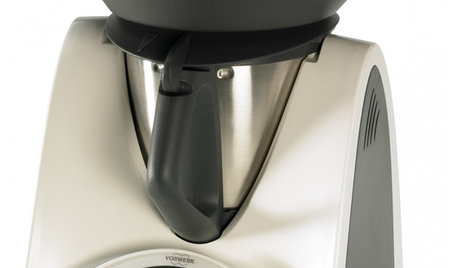How to Order Pizza
jemdandy
8 years ago
Featured Answer
Sort by:Oldest
Comments (27)
nanny98
8 years agograinlady_ks
8 years agoRelated Discussions
How to I Remove Pizza Stone that is Stuck...
Comments (3)Put a towel in bottom of bathtub, place oven rack with pizza stone on the towel and cover with hot water. Allow to soak for a while or until you can remove the stone. There may have been sugar or other kinds of drips on the oven racks that fused the pizza stone to it. Water will soften the drips allowing the stone to release. Be sure and let pizza stone dry completely before using....See MoreHelp - Make Up Air
Comments (46)The 2009 code in many cold weather states require MUA systems for over 400 CFM M1503.4: "Exhaust hood systems capable of exhausting in excess of 400 cfm shall be provided with makeup air at a rate approximately equal to the exhaust air rate. Such makeup air systems shall be equipped with a means of closure and shall be automatically controlled to start and operate simultaneously with the exhaust system." "Makeup air required: Exhaust hood systems capable of exhausting in excess of 400 cfm (0.19 m3/s) shall be provided with makeup air at a rate approximately equal to the exhaust air rate. Such makeup air systems shall be equipped with a means of closure and shall be automatically controlled to start and operate simultaneously with the exhaust system." A2 is strictly enforcing this. I decided to go induction and stay under the 400 CFM. I was leaning toward induction and this just tipped the scale. I am probably going with a Broan evolution hood @ 350 CFM and 4 halogen bulbs using theater lighting. The zephyr genova is very discreet, but concerned that the single fan on the left might not do the trick (only 250 cfm). The ventahoods have a true HEPA filters. I figure A2 is pushing me into the future. If you go too high on CFM, there are dangers, so I plan to avoid the problems! Good luck!! PS - I plucked the Wolf induction on sale. Love the appearance of the surface and had no trouble with the controls - I used my knuckle to tap the power up and down when my fingers were slimed! I liked the large burner and the set up of the burners and only one cook as my husband only knows how to order pizza and not cook. I only tested it at the appliance dealer, so can't wait to the kitchen is done and I actually can really test it....See Morepizza hut's all natural pizza..anyone tried yet?
Comments (3)Yes Hormel makes tasty nitrate preservative free lunch meats too...Costs more...but taste delish...bacon as well... And Jimmy Deam makes a delish Natural sausage in "hot" and regular. I use the hot for pizza or breakfast. and then there is this other brand of hotdogs and polish or smoked sausage I buy that is Gluten Free and nitrate free. Bistro Naturals by John Morrell. another one to check on is Dietz and Watson...Albertsons Deli carries it. Applegate Farms (carried at Trader Joes and other "natual" grocery stores....See Morehow big is a ''large'' pizza as advertised on TV?
Comments (6)You might try asking the guys at The Pizza Making Forum. Many of the members there own pizza restaurants, and they are very generous with advice and comments. I generally make my own pizza rather than buy it, and my largest pan/screen is 15" or 16" diameter. I also have 9" diameter screens for individual pizzas, but I haven't used those since I got a better regular oven. I used the small screens in the toaster oven with Saltillo tile for a pizza stone. Lars...See MoreUser
8 years agoeld6161
8 years agoglenda_al
8 years agochisue
8 years agowildchild2x2
8 years agocaseynfld
8 years agograywings123
8 years agochisue
8 years agoplllog
8 years agograinlady_ks
8 years agojaney_alabama
8 years agokathleen44
8 years agoplllog
8 years agoartemis_ma
8 years agoTexas_Gem
8 years agograinlady_ks
8 years agoChi
8 years agoartemis_ma
8 years agoChi
8 years agograinlady_ks
8 years agoChi
8 years agopetalique
8 years agograinlady_ks
8 years agoplllog
8 years ago
Related Stories

GREAT HOME PROJECTSHow to Get a Pizza Oven for the Patio
New project for a new year: Light a fire under plans for an outdoor oven and claim the best pizza in town
Full Story
LIFEHouzz Call: What Has Mom Taught You About Making a Home?
Whether your mother taught you to cook and clean or how to order takeout and let messes be, we'd like to hear about it
Full Story
HOME TECH3 Kitchen Contraptions You Won’t Believe
Pizza hot from the printer, anyone? These cooking gadgets harness imagination and high tech — and have price tags to match
Full Story
BACKYARD IDEASThis Backyard Is Ready to Party
Colorful outdoor furniture, a custom pizza oven and a stainless steel hot tub make for a lively backyard in Menlo Park
Full Story
MONTHLY HOME CHECKLISTSTo-Dos: Your May Home Checklist
Get your house and yard in order now, and you’ll be ready to enjoy the summer days ahead
Full Story
STORAGEVintage Armoires and Cabinets Add Storage — and Character
Traditional armoires and wooden cabinets can keep order beautifully throughout your home
Full Story
LIFEGo Ahead, Eat in Front of the TV
But at least do it stylishly. A favorite guilty pleasure turns sophisticated with seats, tables and screens designed for a mealtime show
Full Story
MOVINGHow to Make Your Move Easier for Your Family
Say goodbye to a much-loved home and settle in quickly to a new place with these tips for transitioning
Full Story
KITCHEN DESIGNKitchen Confidential: 9 Trends to Watch for in 2016
Two top interior designers share their predictions for the coming year
Full Story
LIFE10 Quick Ways to Get Your House Ready for Company
Holiday checklist: See how to make your home 100-percent welcoming in an afternoon. Plus: How to be a good guest
Full Story


wildchild2x2